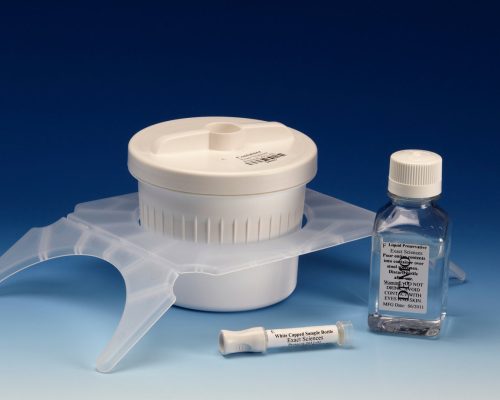Cologuard®
Non-Invasive Colorectal Cancer Screening Option
Colorectal cancer is a prevalent health concern, but with advancements in medical technology, there are now more accessible and non-invasive screening options available. One such option gaining attention is Cologuard. In this section, we delve into the specifics of Cologuard and its significance in colorectal cancer detection.

The Science Behind Cologuard
Cologuard is a molecular stool test designed to detect both colorectal cancer and advanced adenomas. It employs advanced DNA analysis and fecal immunochemical testing to identify altered DNA and blood in the stool. Understanding the scientific basis of Cologuard is crucial for patients seeking an effective and convenient screening method.
Cologuard vs. Colonoscopy
While both Cologuard and colonoscopy serve as screening tools, they adopt distinct approaches and provide different information. Cologuard detects proteins shed from colon cancer and polyps, while colonoscopy visually identifies the polyps themselves.
Colonoscopy, despite its effectiveness, carries a low risk of complications, including reactions to sedatives or possible puncturing of the bowel. Cologuard, in contrast, eliminates these risks. However, a 2019 study identified limitations, including the potential for false negatives, overlooking larger polyps, and a higher risk of false positives compared to colonoscopies.
Notably, Cologuard and colonoscopy can complement each other in a screening regimen. Cologuard can serve as a non-invasive, first-line test for individuals at average risk, providing an additional layer of early detection.


Eligibility for Cologuard
The target demographic for the Cologuard test includes individuals at average risk, particularly those between 50 and 75 years old. Screening recommendations from the U.S. Preventive Services Task Force (USPSTF) suggest initiation at age 50, while the American Cancer Society recommends screening from age 45.
For individuals with an increased risk of colon cancer due to family history, inherited mutations, or other known risk factors, consultations with healthcare providers are vital. These discussions should explore the possibility of commencing screening even earlier.
Interpreting Cologuard Test Results
Following the submission of a stool sample, Cologuard test results, delivered as either “negative” or “positive,” are sent to the attending physician. Negative results indicate the absence of atypical DNA or hemoglobin biomarkers, suggesting no signs of colon cancer or precancerous polyps. In the event of a positive result, further testing, typically a colonoscopy, is recommended to confirm and address potential issues.
It is crucial to acknowledge the presence of false positives and false negatives in Cologuard results. A 2014 clinical study revealed a 13 percent false positive rate and an 8 percent false negative rate, highlighting the importance of cautious interpretation.
In the ever-evolving landscape of colorectal health, Cologuard stands as a valuable addition to our arsenal of screening tools. Its non-invasive nature and accessibility contribute to increased screening compliance, potentially leading to earlier detection and intervention. However, maintaining a nuanced understanding of its benefits and limitations is paramount.
